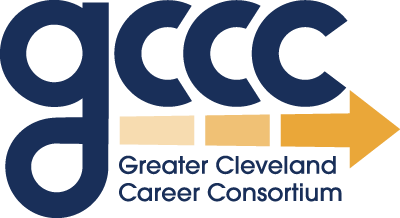
Our Impact
Our Evaluation Process
Shared Measurement is key to any successful collective impact model.
Results-Based Accountability (RBA): Results-Based Accountability is an ends-to-means process for moving from idea to action when it comes to solving complex social problems. With the help of a Clear Impact consultant, GCCC has used RBA to outline clear success metrics and to measure our greater community impact.
More information about RBA here: https://clearimpact.com/results-based-accountability/
Turn-the-Curve (TTC): Part of the RBA process is Turn-the-Curve Thinking, which is a simple and effective evaluation method that can be used by everyone in the work (not just data experts). In practice, this looks like district staff, youth-serving nonprofit partners, and GCCC backbone staff meeting routinely to analyze collected data using the TTC method and moving forward on actionable continuous improvements. The metric(s) and narrative below are a product of these collaborative evaluations.
More information about TTC here: https://clearimpact.com/results-based-accountability/turn-the-curve-thinking/
Scorecard: Our Scorecard is our public dashboard that allows us to share our progress within the collective and with the community for greater accountability and transparency – core values of GCCC. These high-level metrics are broken down by race/ethnicity to help keep equity at the center of our decision-making and impact measurement. In addition to the metrics themselves, it is important for us to include context to help better understand the impact we are having. This context is broken down into several categories as you can see below. *Note: As we improve our data tracking and analysis, we will continue to add more metrics to the Scorecard and update the narrative.
Note: As we improve our data tracking and analysis, we will continue to add more metrics to the Scorecard and update the narrative.
Our Scorecard
Story-Behind-the-Curve
General Context:
District Participation: During the 2023-2024 school year, PACE was embedded into the following six school districts: Cleveland Metropolitan School District, Cleveland Heights-University Heights, East Cleveland, Garfield Heights, Maple Heights, and Warrensville Heights.
PACE Student Participation: Students are counted as participating in PACE if they have at least one activity submission within the Pathways platform. 2023-2024 school year data is GCCC’s baseline from which we can compare progress in future years.
Aggregate Data: The following metric is a combined summary (or aggregate) of all six districts implementing PACE, and the narrative offers common themes present in some or all the districts.
Disaggregate Data: In keeping with the best practice to exclude disaggregated numbers below 10, not all students are accounted for in this graph. The actual total student participation for all six districts is 8,930 students.
What’s Working Well:
Implementation: GCCC partners and school staff are delivering more activities, advising, and engagements to students than in the 2022-2023 school year.
Expansion: GCCC expanded into 5 additional districts in the 2023-2024 school year (Cleveland Heights-University Heights; East Cleveland; Garfield Heights; Maple Heights; Warrensville Heights)
Areas for Improvement:
Student Data Tracking: Nonprofit partner/educator feedback indicates that students’ engagement in PACE is significantly higher than current data show due to incomplete submissions.
Quality Measures: We do not currently utilize a standard quality measure for the PACE curriculum, so we cannot effectively report on how well PACE is being implemented.
Scaling Challenges: PACE is still very new to school districts, which means scaling to serve all 6-12th graders immediately is a challenge.
Partners
To address the challenges above, partners can:

What Works
We currently use best practice approaches to support continuous improvement for increased student participation:
Transparent Collaboration:
GCCC backbone facilitates regular meetings with district and nonprofit partners to evaluate data, center accountability, and support PACE implementation.
GCCC backbone routinely collects, analyzes, and shares data with stakeholders to help guide collective decision-making and support continuous improvement.
Improved Practices:
Partners make data-driven revisions to PACE lessons and reflections to better capture impact.
School leaders develop district-specific goals within the PACE framework to better meet the unique needs of their students.
Partners develop school- and district-level interventions to increase students’ participation in PACE.
Employer partners develop industry-specific pathway guides that lead to High-Wage, High-Demand, High-Growth (H3) careers

Strategy
GCCC will take the following steps to improve this data point:
The PACE Workgroup will revisit PACE curriculum components to ensure alignment to PACE goals and industry standards and will adjust where necessary.
Employer intermediaries and partners will create a curriculum and series of work-based learning opportunities that lead to career placement, on-the-job training programs, and/or college acceptance
The Outcomes & Measures and PACE Workgroups will jointly draft a Quality Framework for future evaluation of PACE components.
The GCCC backbone staff will:
Support partner training for software platforms;
Convene partners to discuss progress and co-develop continuous improvement strategies; and
Develop solutions for data collection challenges

